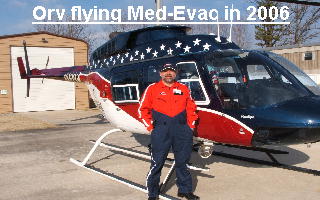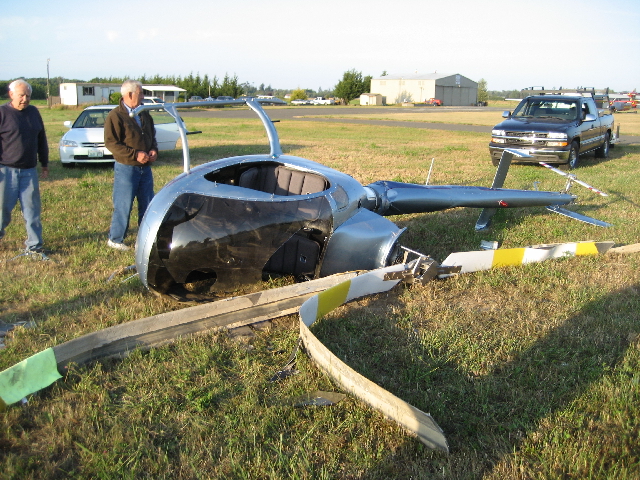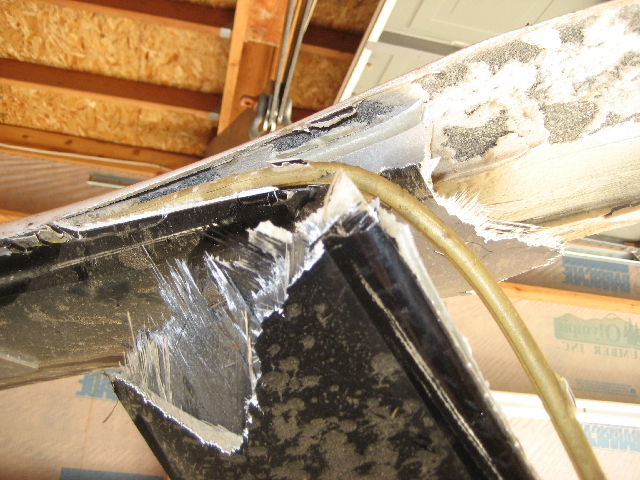 |
I was asked to travel to Sequim, Washington to perform the intial test flights on a beautiful new Rotorway Exec 162f. The builder had incorporated all of the safety modifications that are on this web site and his construction was flawless. I performed the intial test hovers and made a few minor adjustments. Once I was satisfied that the helicopter was ready, Richard joined me (following the ballast weight change) in the cabin. Richard was just completing his third hour of hovering. The helicopter was flying perfectly with no unusual tendencies. We were in a stationary hover with about a 2.5 ft. skid hight when all of a sudden our heads slammed into the cieling of the helicopter. There was no sinsation of rotating about the longitudinal axis of the helicopter because the helicopter rotated so fast that it turned nearly inverted in the time it takes the main rotor blades to make one half of a revolution around the rotor plane (about 1/13 of a second). We felt the helicopter fall back onto its side and we immediately climbed out of the broken windscreen opening. It took awhile for us to process what had just happened but between the NTSB, the FAA, and ourselves, we pretty soon discovered the sequence of events that led to this crash. While the retreating main rotor blade was nearing the tail boom the top skin of the blade suddenly delaminated from the blade structure and curled up destroying all lift on that blade. The advancing blade was nearly in the forward position of the rotor disc when the retreating blade delaminated. The forward blade was now the only blade that was producing lift and it immediately slammed up so hard that it bent the main rotor shaft and snapped the bottom skin and spar of the retreating blade. Due to gyroscopic precession, the tremendous upward force that the forward blade exerted on the rotor mast was "felt" 90 degrees in the direction of rotation- to the right. This tremendous force rotated the helicopter about its longitudinal axis nearly 180 degrees where the skids never touched the ground and the main rotor swashplate hit the ground first. The delaminated blade with the broken bottom skin and spar continued only 180 degrees to the forward position held onto the rotor hub only by the small brass counter-balance rod on its leading edge. The following sequence of photos pretty well tells the story.
The above photo shows the dirt inbeded in the main rotor hub from hitting the ground when the heliciopter inverted. The flat plate on top of the rotor hub is a device used for fine balancing of the rotor system. Note that these blades are not Rotorway blades but were made by the Safari company.
Richard's helicopter came to rest on its side and the upper skin of the rotor blade in the foreground shows where it delaminated from the blade spar.
The above photo shows the bottom skin and spar of the delaminated blade completely separated from the main rotor and held on only by the brass balance rod.
The above photo shows the rotor blade spar that snapped under the incredible forces applied to it when the upper skin delaminated.
This photo above shows the helicopter after we recovered it and moved it to the hangar. The lower surface of the delaminated blade is in the foreground and the upper skin is shown still attached to the blade root end. My advice is to always use the stock Rotorway main rotor blades on these helicopters. This could have easily been a double fatality.
|




